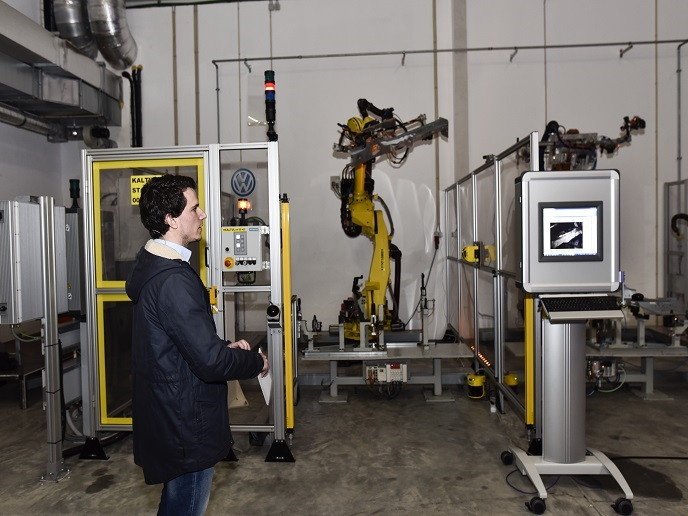Intelligent system and equipment for a more agile manufacturing sector in Europe
“Original equipment manufacturers (OEMs) need to be able to produce premium quality on demand,” says Raquel Caldeira, coordinator of the EU-funded openMOS project. “Traditional manufacturing models based on large production volumes and continuous improvement are becoming more difficult to sustain.” Ever-smaller lot sizes are required to achieve short lead times for a growing range of products and variants. High variety and flexibility is usually the domain of manual manufacturing systems. On the other hand, repeatable high quality is the strength of automation systems. “The root cause of many warranty issues for high-quality products can be traced back to manual work,” she notes. Plug-and-produce (P&P) automation systems combined with industrially relevant technology platforms are seen as a solution to address these issues. Operating system for agile manufacturing production The openMOS team developed a common, open-source P&P system enabling all stakeholders in the automation system value chain to come together and jointly develop and exploit solutions. It allows quick and efficient integration of machines and automation systems within production environments. This is a prerequisite for implementing Industry 4.0 solutions. The manufacturing operating system is easily extendible and adaptable to run higher-level control, planning and optimisation functions. Such functions will ease the introduction of new products, work orders and equipment changes, and will facilitate the seamless deployment of optimisation and changeover management strategies. Introducing new P&P system concepts in manufacturing Project partners developed several other key innovations, most notably new embedded automation devices and components with P&P capabilities, such as a linear axis system, a rotary module and a click-clack gripper. They delivered a manufacturing service bus – an open service-based communication platform used for vertical and horizontal connectivity between P&P automation components and higher-level control and business functions. It guarantees that production is executed continuously in a demand-driven manner. “openMOS enabled us to test and validate the seamless integration of different standards in the same ecosystem,” notes Caldeira. She calls this effort “a great breakthrough for the adoption of common and open standards in the manufacturing industry to further reuse technology, make processes more flexible and reduce customisation costs.” OEMs and system integrators stand to benefit most from the innovations. A reference architecture for P&P assembly systems shows how P&P for manufacturing system concepts can be realised. “The advantages of agility and resilience are now available without compromising performance,” adds Caldeira. More flexible processes are available with a clear distinction between production optimisation and time-critical production execution. These end users now have access to a set of self-deploying, flexible and self-adapting P&P devices. Combined with a device adapter, the devices can extend to existing equipment, such as industrial robots, quality inspection systems and power meters. They don’t have to deploy every module of the whole developed software stack, just the functionality needed for a particular system. This increases industrial adoption of project results. The system’s agent cloud and intuitive human-machine interface provide system optimisation recommendations for both cycle time and energy consumption, and ramp-up decision support. “The openMOS suite of technological tools will help companies manufacture faster, at a consistently higher quality and lower cost, all in an agile environment,” concludes Caldeira.
Keywords
openMOS, manufacturing, P&P, agile, production, automation system, manufacturing industry, OEM, Industry 4.0

